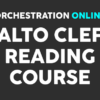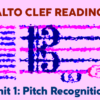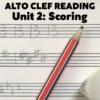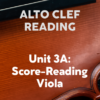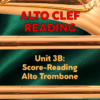I cannot imagine a single copyist who would have the income to drop over $700 on a book like this, which is what’s asked on Amazon. And yet if you work by hand for a living, then it’s the best book that I’ve ever read on the subject. Clean, clear, concise, and precise. If you see a copy at a yard sale, snag it! But Google around for some other guides – Berklee has a couple, I think.
« Behind Bars: The Definitive Guide to Music Notation by Elaine Gould
On The Track: A Guide to Contemporary Film Scoring by Fred Karlin and Rayburn Wright »
Related Posts
ALTO CLEF READING COURSE ORIENTATION
Welcome to the Orchestration Online Alto Clef Reading Course, designed to quickly and permanently im
ALTO CLEF READING, UNIT 1: PITCH RECOGNITION
FINDING A USEFUL SYSTEM When I was just about 14, I switched over from the violin to viola in my jun
ALTO CLEF READING, UNIT 2: SCORING
Note: make sure to read my first tip in this course on Alto Clef concerning Pitch Recognition, downl
ALTO CLEF READING UNIT 3A: VIOLA
If you’re new to reading the alto clef, but you’ve taken the time to drill yourself on Pitch Recogni
ALTO CLEF READING UNIT 3B: ALTO TROMBONE
If this is your first look at my Alto Clef Reading Course, jump back to the my first two sections on
ALTO CLEF READING UNIT 3C: CONTRALTO VOICE
This represents the final post in my series, “Alto Clef Reading Tips and Drills.” Make sure that you
ALTO CLEF READING, UNIT 4A: 100 SIGHT-SINGING DRILLS
100 ALTO CLEF SIGHT-SINGING DRILLS By this point in my Alto Clef Reading Course, you should have sha
Orchestration Tip: Horn Middle Register
For better control in delicate scoring, use the horn’s middle register, especially in the octave bet

